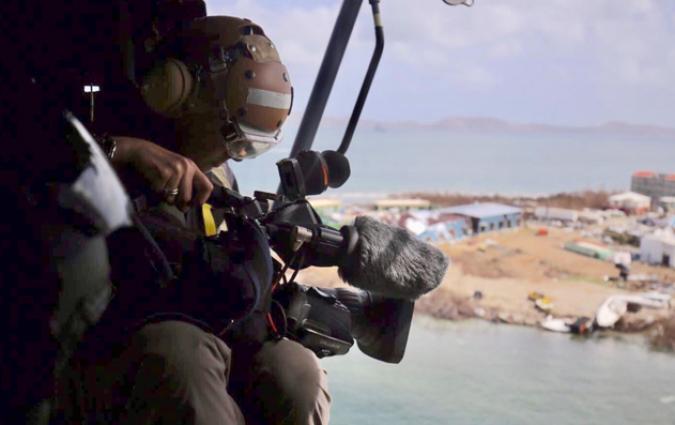In this piece
Why black African women leave South Africa’s newsrooms

Bongekile Macupe, deputy politics editor at leading South African digital news outlet News24, delivers a speech at the Frontline Club in London. Credit: John Cairns
In this piece
Why “black African women”? | The view from the newsroom floor | The boys’ club – and who it serves | Invisible burdens | Middle management without authority | When sisterhood isn’t safe | Choosing themselves | Why it mattersIn July 2025, I stood at the Frontline Club in London to present my Reuters Institute fellowship project: an exploration of what it means to be a black African woman in South Africa’s newsrooms. After my presentation, someone asked: “How can newsrooms better show up for black African women?”
My answer was simple: “See us.”
Black African women are not being done a favour by working in newsrooms; we deserve to be there. We are trained, talented, and capable. And we ask to be recognised for our contributions, and to be given the space to do the work we love.
Far too often, that recognition doesn’t come – and for many, the only choice left is to leave.
In my three‑month fellowship, I spoke to 10 black African women journalists with newsroom experience ranging from a year to over three decades. Their stories varied, but the patterns were clear.
Why “black African women”?
In South Africa, women of many different ethnic backgrounds may identify as black, and women of all ethnic backgrounds may identify as African. This project focuses on a specific group: women who would have been classified as black African under the apartheid regime, and who continue to face distinct repercussions of that systemic injustice.
The term “black African women” is used deliberately to avoid collapsing all experiences into a single category of “Black women”, and to reflect the specific historical and social context of the group at the centre of this research. The word “black” is written in lower case to avoid suggesting a single, monolithic experience of Black identity.
While space has been dedicated elsewhere to cataloguing the common experiences of all South African women in newsrooms, and all black and brown South Africans in newsrooms, no single study has examined the unique position of black African women journalists alone.
The view from the newsroom floor
Black African women are often in the majority in newsrooms as reporters and producers. Yet they are almost entirely absent from senior editorial positions. Since 2020, when Nwabisa Makunga stepped down as editor of the Sowetan, no black African woman has edited a national mainstream print or digital publication.
When black African women do rise to leadership, they are often met with scepticism that white women or black men in the same roles rarely face. Makunga’s appointment as Sowetan editor was met with public doubt about her experience and unfounded rumours about her personal life. Her achievements were dismissed as the work of others.
“The most hurtful thing – and funny enough, I actually don’t talk about it much at all,” Makunga told me, “the most hurtful label that I received while at Sowetan was, ‘She’s Tshepo’s princess’
[referring to the owner of the media house, Tshepo Mahloele]. Yhuuu, Bongekile! That thing killed me.”
When black African women leave these positions, they are replaced by black men or women of other races. The same cycle repeats.
The boys’ club – and who it serves
One explanation that emerged repeatedly in interviews is the enduring “boys’ club” in South African media.
In 2006, a South African National Editors Forum report described how white men dominated editorial positions during apartheid, later making space for black men without changing the underlying structures. In 2018, the third annual Glass Ceilings survey described newsroom exclusion as happening in “subtle ways shrouded in patriarchal culture”.
The women I spoke to say those subtle ways are not subtle at all. They describe black African male journalists being promoted or rehired after poor performance, while equally qualified black African women remain sidelined. Opportunities are discussed in bars and social circles that women are excluded from.
As one interviewee put it: “They don’t let you in. You have to fight to go in.”
Invisible burdens
Gendered barriers in newsrooms are not unique to South Africa, but the intersection of gender and race adds another layer of complexity for black African women.
Several women described the stark differences in how white women and black African women are treated. White women are often given more space to make mistakes, more understanding when they need flexibility, and more protection when workplace conflicts arise.
As one young journalist told me: “I can’t cry. White women cry in the newsroom and people comfort them. If I cry, I look weak and I’m out.”
Middle management without authority
South African newsrooms have appointed black African women to middle management roles – as news editors, section editors, deputy editors, and politics editors.
But the authority that should come with those roles is often undermined. Women described insubordination from team members, open disrespect, and being second‑guessed in ways that male counterparts were not.
One manager recalled being shouted at across the newsroom by a senior male colleague who refused to accept her instructions. The same manager spoke of male staff bypassing her entirely, taking their issues to a white male manager who had previously held her role.
As one former editor put it: “Black men don’t respect a black woman’s authority. You have to assert yourself every day. It’s exhausting.”
When sisterhood isn’t safe
Many of the women I interviewed had hoped that having more women in leadership might make a difference. Some found support and mentorship from women managers, but others found the opposite.
Several said their most toxic newsroom experiences happened under women leaders – including black African women. Favouritism, cliques, and competition for scarce opportunities all contributed to tense environments.
This does not negate the solidarity that does exist. Many women spoke with gratitude about the female colleagues who had supported their careers. But as one said: “Not all women in leadership are committed to transformation. Some get into power and replicate the very systems that harmed them.”
Choosing themselves
For many of the women I spoke to, leaving journalism was not about losing passion for the work. It was about survival.
One former reporter left after a traumatic pregnancy in which her medical needs were ignored by her newsroom. Another walked away after more than a decade of constant resistance to her authority. Others left quietly, worn down by years of proving themselves without ever being fully recognised.
Those who left have built successful careers elsewhere – some launching their own publications, others moving into communications, policy, or advocacy. But almost all still speak about journalism with love.
Why it matters
The absence of black African women in senior editorial roles is not just about representation. It shapes coverage, perspectives, and the future of the industry.
Newsrooms that fail to create space for black African women to thrive are limiting their own potential. These are talented, committed journalists who want to be part of shaping South Africa’s public conversation – if only they can do so without having to fight every day for the right to exist in the newsroom.
As I told the audience in London: black African women journalists want to be seen.
Seen for their skills. Seen for their contributions. Seen for their presence – not as tokens, but as essential voices in the newsroom.
To read Bongekile's full project, download the PDF below.



